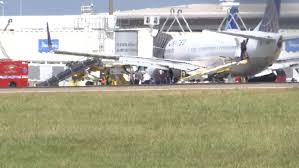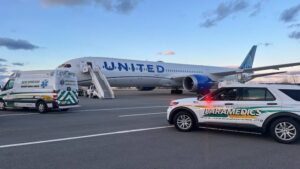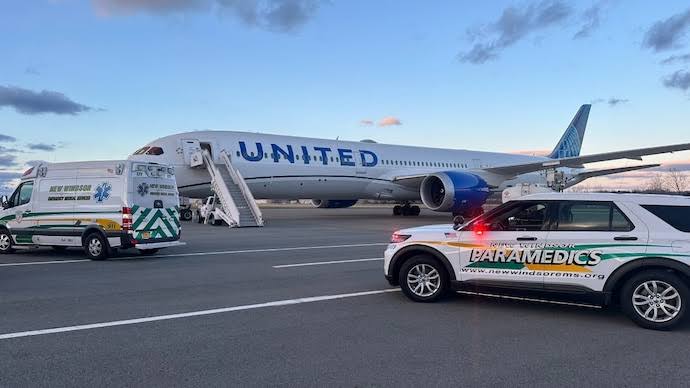Several Passengers Injured as United Airlines Flight Diverted Due to Turbulence
April 18, 2025
A United Airlines flight encountered severe turbulence, leading to injuries among passengers and prompting an emergency diversion. This incident underscores growing concerns about turbulence-related events in commercial aviation.
Incident Overview
On April 13, 2025, United Airlines Flight 2325, a Boeing 737-800, departed from Denver International Airport en route to Edmonton, Canada. Shortly after takeoff, the aircraft experienced an engine fire caused by a rabbit being sucked into the right engine. Passengers reported loud noises, heavy vibrations, and visible flames emanating from the engine. The crew, initially unaware of the cause, reported engine failure after an air traffic controller observed flames. The aircraft circled for over an hour as the crew assessed potential damage, particularly concerns about the landing gear. Ultimately, the plane landed safely using the left engine

Passenger Accounts
Passengers aboard Flight 2325 described the experience as terrifying. One passenger recounted seeing a “giant fireball,” leading to panic onboard. Many passengers sent final messages to loved ones, fearing the worst. Despite the alarming situation, the crew managed to land the aircraft safely back in Denver.
Broader Context
This incident is part of a series of recent aviation issues involving United Airlines. For instance, on March 2, 2025, a United Airlines flight from Missouri to Texas was forced to make an emergency landing in Waco due to severe turbulence, resulting in five injuries that required hospitalization. Additionally, a United Airlines flight from Cancun to Chicago was diverted to Memphis after severe turbulence left several passengers injured.

Increasing Turbulence Incidents
Experts have noted an increase in turbulence-related incidents in recent years. A study by the University of Reading reported that incidents of severe turbulence jumped by 55% over the past four decades as more extreme weather has become more common. This trend is attributed to changes in atmospheric conditions, potentially linked to the global climate crisis.
Safety Measures and Recommendations
In light of these incidents, aviation authorities and airlines are emphasizing the importance of safety measures. Passengers are advised to keep seatbelts fastened when seated, even if the seatbelt sign is off, to minimize the risk of injury during unexpected turbulence. Airlines are also reviewing protocols to enhance passenger safety and improve response to in-flight emergencies.
Conclusion
The recent incidents involving United Airlines flights highlight the challenges posed by unexpected in-flight emergencies, including severe turbulence and wildlife strikes. As the aviation industry continues to adapt to changing environmental conditions, ensuring passenger safety remains a top priority.





![Ulewy cały czas nad Polską. Rekordy pobite na 11 stacjach [RELACJA NA ŻYWO]](https://sportdomain.com.ng/wp-content/uploads/2025/07/FB_IMG_1752066531430.jpg)
